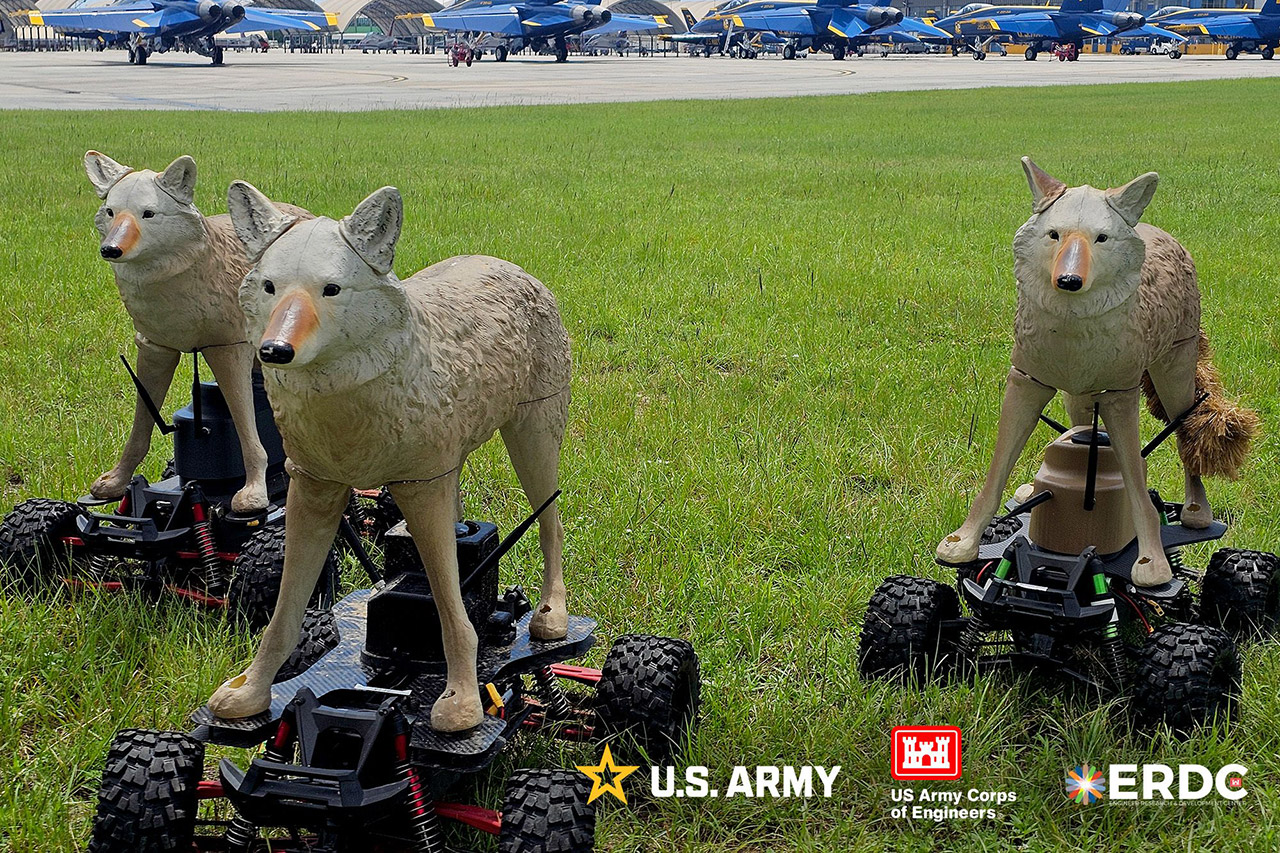
The U.S. Army Corps of Engineers have built something you don’t see everyday: Coyote Rovers, four-wheeled robotic vehicles topped with life-size plastic coyotes, cruising airfields to spook birds and critters away. Dreamed up by the Engineer Research and Development Center (ERDC), these odd robotic predators mix were designed to tackle a pricey problem.

After five years of research, ERDC wildlife biologists Dr. Stephen Hammond and Dr. Jacob Jung teamed up with the USDA’s National Wildlife Research Center to bring Coyote Rovers to life. They first tried Boston Dynamics’ Spot robot, a sleek four-legged bot that looked cool but was too slow to scare wildlife. The fix? They swapped it for Traxxas X-Maxx motorized cars that zoom at 20 mph and slapped plastic coyote figures on top for a fierce vibe. At about $3,000 a pop, these rovers are a steal compared to the millions lost to wildlife-related aircraft damage. Early tests at Naval Air Station Pensacola—home of the Blue Angels—plus spots like Fort Campbell and Naval Air Station Whiting Field, showed they’re ace at keeping runways clear.

Dingdongwu Smart Robot Dog – Interactive STEM Pet with Voice Control, 30+ Actions & APP Programming,…
- 🤖30+ Lifelike Actions & Voice Commands: Watch your robot pet perform Kung Fu, handshakes, somersaults, and hilarious “pee attack” pranks! Control…
- 💻STEM Learning & Custom Programming: Spark creativity with coding mode! Kids can design custom action sequences, building logic skills while…
- 📱Parent-Friendly APP & Multi-Control: Manage playtime effortlessly with the free iOS/Android APP: adjust volume, switch languages (CN/EN), or lock…
These rovers work like high-tech drones. They follow programmed paths and steer clear of no-go zones like active runways. With docking and charging stations, they can run on their own for days. Unlike boring old scarecrows, these bots move like real coyotes. Beyond airfields, the Army Corps sees them guarding locks, dams, and other infrastructure from pesky nesting birds or burrowing critters that wear things down.
The big draw is the cash they save. Airfields burn through budgets mowing grass to keep animals away, a time-consuming and costly chore. Hammond figures stretching mowing schedules by even a week could save millions across a few bases. By shooing birds and critters, the rovers cut down on landscaping needs and lower the odds of disastrous crashes. The military’s tried quirky fixes before, like falconers in Washington state chasing seagulls off submarines or GPS collars on real coyotes to track them. But Coyote Rovers bring a scalable, tech-savvy solution that skips live animals or human wranglers.
The future looks even wilder. With AI and machine learning, these rovers could spot specific critters—like starlings versus a stray deer—and adjust their scare tactics on the fly. Upgrades for rough terrain or bad weather would let them roam beyond flat airfields.
[Source]